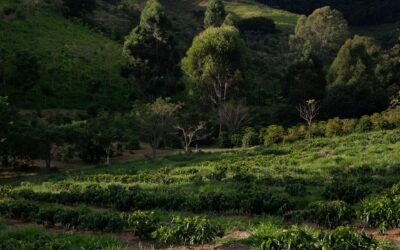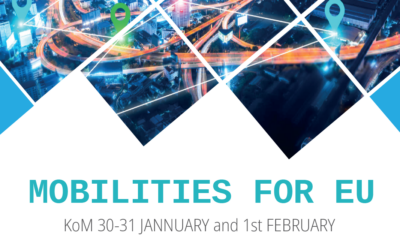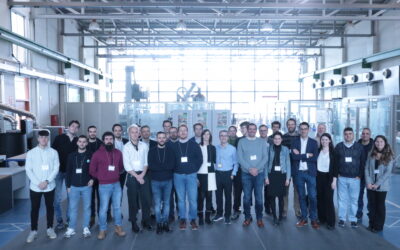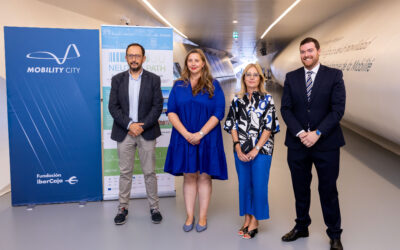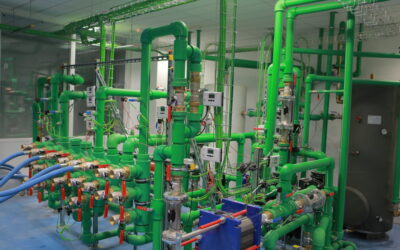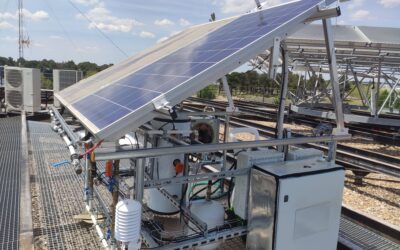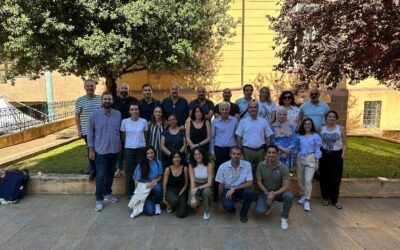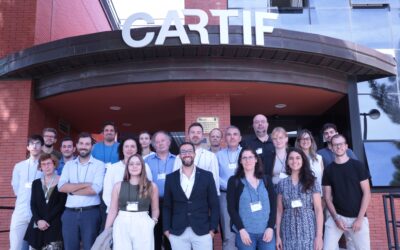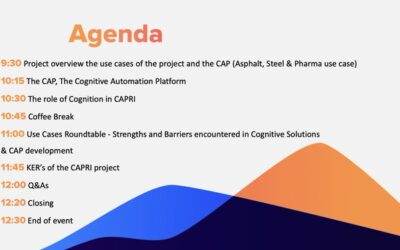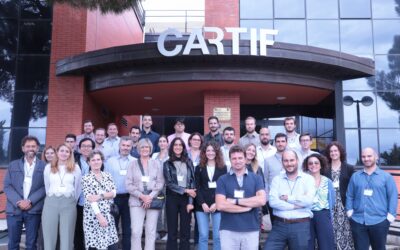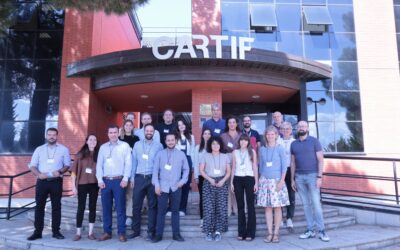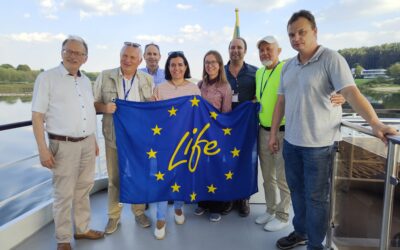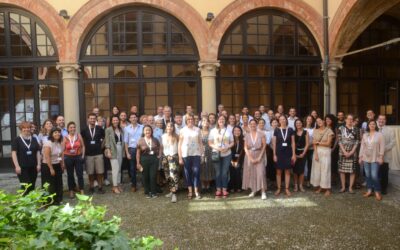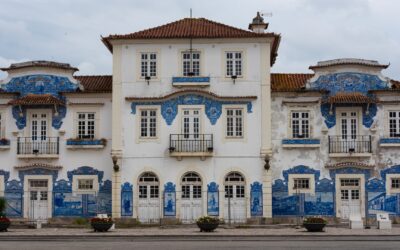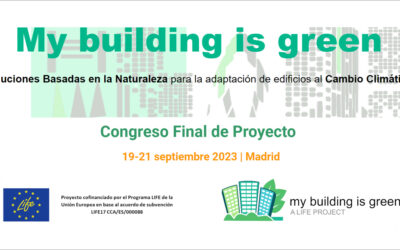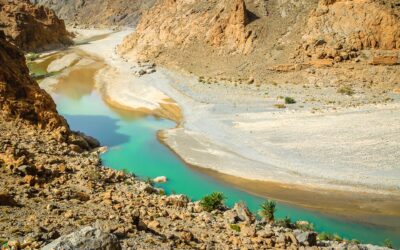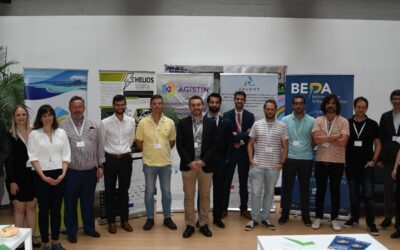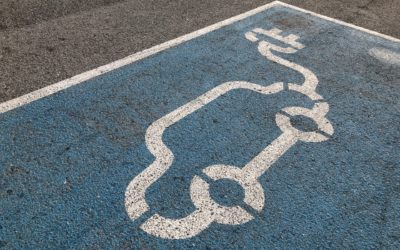CARTIF PROJECTS
INFIT
Keeping the safety of the entire rail network
Description
Keeping the safety of the entire rail network and, above all, critical elements such as tunnels, becomes a fundamental and priority objective for the Strategic Plan of Infrastructure and Transport (PEIT). For this, the potential causes of problems must be detected, usually cracks and fissures, and their growth must be controlled. Current evaluation systems are slow, subjective and unreliable.
In INFIT, automatic data capture systems have been developed to obtain an accurate and objective image of the tunnel surface. New tools have been developed that are capable of detecting, classifying and monitoring the cracks and fissures that may appear, as well as a system for the prevention of potential risks that may affect the integrity of tunnels, users and workers.
Objectives
- The development of a new railway tunnel inspection system based on the integration of image acquisition devices and active lighting equipment capable of highlighting fissures or cracks.
- The development of detection algorithms to facilitate the location and measurement of size and orientation of cracks and fissures that may jeopardize the integrity of the tunnel.
- The implementation of monitoring tools that allow the evaluation of the growth of defects detected through analysis and comparison of successive periodic inspections.
Actions
- Analysis and specification of the technical requirements of the tools for inspection, detection and tracking of cracks and fissures.
- Development of a crack inspection prototype, designing its architecture, synchronizing the acquisition devices and manufacturing the platform.
- Technologies and methods of detection, measurement and tracking of fissures using image processing algorithms.
- Integration, prototype validation and demonstration of the complete system in real environments.
Expected results
- An inspection system of 100% of the surface of the tunnel through the use of linear cameras with a resolution per pixel between 1- 0.25 mm2.
- Crack detection algorithms for the location and determination of size and position of cracks and fissures.
- Tracking tool that automatically, accurately and objectively evaluates the growth of the cracks detected by algorithms for comparing successive inspections and automatically generates monitoring reports.
Partners:

INNPACTO 2012
INFIT: IPT-2012-0980-370000

Presupuesto total: 620.006,75 €
Contribución 206.289,70 €
Duración: 24 meses: Octubre 2012 – Octubre 2014

Responsible
Roberto Medina Aparicio
Divison of Industrial and Digital Systems
Networking
Cultural and natural heritage projects:
Study of the use of alternative protein sources from agro-industrial by-products.
Increase the extractability of protein sources and other compounds of nutritional interest, naturally present in by-products generated in the transformation processes of the food industry, through the use of “green technologies” of pre-treatment such as extrusion
Incorporation of new equipment and processes to improve the advance digital manufacturing laboratory
Acquisition of advanced technological elements to enhance rapid prototyping services, as well as to support specific developments in the challenging processes of creating objects that are not available on the market or are costly to produce in limited quantities.
Agrigenomics and next-generation sequencing technologies
Implement advanced solutions to solve various problems linked to the agro-forestry and food sectors in Castilla y León, such as soil degradation, low agricultural productivity or the incidence of pests and diseases
Study of the mechanical behaviour of recycled composite from the aeronautical industry and wind turbine blades.
Increase knowledge of the mechanical behaviour of recycled materials from the aeronautical industry and wind turbine blades.
Efficient recovery of metals from spent EV batteries
The project focuses on the recovery of critical metals present in the cathode of spent electric vehicle battery cells, through a more environmentally sustainable process, for their future reintroduction into the value chain.
PROBIO
The general objective of the PROBIO project is to work on broadening the spectrum of substrates that can be treated in fermentation processes for the production of renewable gases (biohydrogen and biomethane) and biocompounds of interest (volatile fatty acids).
CARTIF presents in Madrid the MOBILITIES for EU project, which will accompany the Spanish capital and Desden (Germany) in their transformation towards climate neutrality
The technology centre CARTIF presents this week in Madrid the project MOBILITIES for EU (New MOBility solutions for climate neutrality in EU cITIES) thath will help the capital of Spain and Dresden (Germany) in their transformation towards climate neutrality, focusing...
ARISE project kicks off at CARTIF, designed to stregthen European industry 5.0 through Human-Robot Interacion (HRI)
CARTIF technology centre has been the venue of the ARISE project kick-off meeting. Members of the organisation that make up the consortium, from different parts of Europe, met to establish the first steps of an initiative designed to strengthen European Industry...
iAMP_Hydro
iAMP-Hydro aims at improving the operation of existing hydropower plants (HPP) through the development of digital solutions which will be integrated into an intelligent Asset Management Platform (iAMP)
The K-HEALTHinAIR launches a public survey to study public awareness of indoor air quality
The K-HEALTHinAIR project, led by CARTIF, has published this week an open survey in order to find out the degree of perception and knowledge of this population about indoor air quality. Through this initiative, the aim is to assess the situation and raise awareness of...
INHERIT
The overall vision of INHERIT is to create a systematic methodology, accompanied by leading-edge Information and Communication Technologies (ICTs), such as Internet of Things (IoT), Artificial Intelligence (AI) and (big) data analytics, and associated social/behavioural practices, towards sustainable, inclusive and resource-efficient Cultural Heritage (CH) solutions.
The INHERIT Project starts to promote the sustainability in historical buildings through TICs and new technologies
The INHERIT project helds its kick-off meeting in Athens on 2 November. About 18 partners of the consortium had been meeting at the Singular Logic facilities, coordinating entity, with the objective of launching a new project, which will promote the sustainability of...
CLEANPORTS
CARTIF Projects CLEANPORTSResearch of intelligent and sustainable nay solutions for the automation of logistics and advanced intermodal processes from por to last mile.DescriptionThe main objective of the project is to improve logistics processes for the complete...
ARISE
The ARISE project envisions a near future which aligns with Industry 5.0, prioritising, resilient, sustainable and human-centric work environments. In such a future, companies recognise that investing in industrial human-robot interaction (HRI) is essential for achieving better short- and long-term goals, rather than a cost.
SGA1-NZC
SGA1-NZC has as an objective give support to 100 cities selected to be intelligent and climate neutral by 2030.
ECOFORES
ECOFORES objective is the development of nerw bioproducts, agroecological processes and new solutions environmentally sustainable, through the application of subproducts conversion technologies.
AIR-COMPOST
AIR-COMPOST general objective is to reduce the odours and Volatile Organic Compounds (VOCs) produced on the process of composting through the addition of microorganisms, additives and other compounds.
D-HYDROFLEX
D-HYFROFLEX seeks research into technological innovations in hydropower plants in search of improved efficiency and sustainability and hydropower competitiveness in modern electricity markets. The project will develop tools for the digital renovation of existing hydroelectric plants based on sensors, digital twins, artificial intelligence, hydrolyser modelling and image processing.
NATMed
NATMed project will develop, implement and validate a joint of innovative nature based solutions (NbS) on existent water infrastructures for improving the management of the water cycle and provide Ecosistemic Services and environmental, social and economic benefits.
NEUTRALPATH project will apply its first Positive and Clean Energy Districts (PCED) in Zaragoza by the end of 2024
Zaragoza has been selected as part of the NetZeroCities initiative to be one of the first European urban core to achieve the climate-neutrality by 2030. Thanks to the NEUTRALPATH project, the first Clean and Positive Energy District (PCED) will be implemented in the...
ENPOWER
ENPOWER will design, develop and demonstrate SSH-driven methodologies, interactive and closed-loop tools, and data-driven services for energy-activated citizens and energy-secure cross-sector communities towards a citizen-centric energy system.
Test bench for water-to-water heat pump
technological offer Test bench for water-to-water heat pumpDescriptionCARTIF has a test bench for water-to-water heat pumps with a capacity of up to 100 kW thermal with 4 or 6 pipes. The installation allows for the adjustment of both temperatures and flow rates to the...
Test bench for fv-t collectors
tECHNOLOGICAL OFFER Test bench for FV-T collectors DescriptionCARTIF has a test bench for FV-T photovoltaic thermal hybrid solar panels, that includes the monitoring and regulation systems to be able to test its functioning and obtain test curves from a global...
NATMed project holds its second regular meeting in Sassari, Italy
NATMed has held on 26 and 27 September its second regular meeting at the premises of the University of Sassari (Italy). The aim of this session was to evaluate the profess of the project, in particular the development of the Case Studies and the Nature-based Solutions...
The WalNUT project consortium meets at CARTIF to analyse the status of nutrient recovery
The WalNUT project consortium met on 27 and 28 September at the facilities of CARTIF for its regular M24 meeting. During the meeting, the partners had the opportunity to meet in person for the first time to further discuss issues related to nutrient recovery. The aim...
CAPRI project holds final meeting in open webinar to discuss the role of cognition and its implication
CAPRI is holding its final project meeting on 28 September in an online session open to the public. The event will feature a presentation, overview and success stories of the project, to put into context those interested in the proposal, and will share the results and...
DigiBUILD project holds its 5th regular meeting at CARTIF to generate the Data Lake through its pilot buildings
DigiBUILD held its 5th regular meeting on 21 and 22 September at the facilities of the CARTIF technology centre. The aim of this session was to collect the data obtained from the different pilot buildings to jointly generate the Data Lake with which the aim is to...
BUILDSPACE holds its first plenary session at CARTIF to discuss the user interfaces of the project’s tools and platform
On 19 and 20 September, CARTIF hosted the BUILDSPACE project consortium for its first plenary session. The partners, after their launch meeting held last February in Athens, met again at the technology centre's facilities in order to review the status of the...
RURACTIVE
RURACTIVE encourage a just and sustainable transition of rural areas through intelligent solutions, lead by the community, tailor-made, based on the local and inclusive inside the multi-stakeholder rural innovation ecosystems at 12 pilot areas (Dynamos, Ds).
LIFE NEXUS project holds a workshop in Lithuania about generate mini-hydropower in urban water networks
More than 30 participants met on 12 and 13 September in Kaunas (Lithuania) to discuss mini-hydro generation in the urban water cycle at an international workshop in the framework of LIFE NEXUS project. Representatives of water supply and treatment from Lithuania,...
RURACTIVE Project holds its kick-off meeting in Bologna to promote the just and sustainable transition of rural areas
The RURACTIVE project consortium held its kick-off meeting on 13, 14 and 15 September at the University of Bologna (Italy). These sessions have served as a meeting point for the partners to lay the foundations for the promotion of a just and sustainable transition of...
SMARTeeSTORY
SMARTeeSTORY will create an integrated intelligent building automation and control system to monitor and optimise the energy performance of historic non-residential buildings, according to an innovative multi-domain approach (integrating the 9 domains proposed by the ISR methodology).
SunHorizon project holds final conference on innovative solar-coupled heat pumps
The SunHorizon project closes its five years of work with a final conference on heat pumps on 27 September at the Brussels Marriot Hote Grand Palace in Brussels. The aim of the meeting is to present the results of the project and to demonstrate the innovative TRL 7...
LIXIV-IA
LIXIV-IA proposes the development of solutions based on artificial intelligence (AI) and big data for the optimisation of the operation of autonomous containerised plants.
FoSSIS3
FoSSIS3 objective is to develop an operational Platform based on artificial intelligence to support decision-making in the energy planning process, through the characterization and estimation of the solar resources, and the development of analytics that support the strategy to improve the energy behavior of the building sector.
The LIFE myBUILDINGisGREEN project organises its final conference on climate adaptation of buildings through Nature-based Solutions
The LIFE myBUIDLINGisGREEN project comes to an end and to commemorate these last years it has organised a final conference from 19 y 21 September to be held at the facilities of the Royal Botanic Garden (RJB-CSIC) in Madrid, the project coordinator. The event will...
ONEPLANET
ONEPLanET aims at empowering African policy makers, research & academia, investors and citizens with the necessary tools and know-how to promote the sustainable energy transition.
BuildON
BuildOn pretends to develop a generic solution and highly replicable to offer services on buildings, facilitate the integration of their systems and technologies and with it, help to construct a new generation of smart buildings.
ENFLATE
ENFLATE applies technologies on data-driven energy and non-energy services, which it will replicate in different geographies and climates, considering different consumer needs.
TALENT project, led by CARTIF, has held its last follow-up meeting in Brussels, followed by a final event
The TALENT project will end its activity on 31 July 2023 after 46 months since its inception. To close this cycle, the project consortium, which had the objective of promoting the integration of electrical storage in the grid through batteries, reducing cost and...
DIGIBUILD
DigiBUILD overview is to provide an open, interoperable, cloud-based toolbox to transform buildings from traditional `silos´ into interoperable, smarter, digital buildings based on consistent and reliable data
THUMBS UP
THUMBS UP aims to develop and demonstrate thermal energy storage (TES) at daily (based on PCM) and weekly level (based on TCM soprtion technology) solutions to be easily integrate in EU buildings (both connected and not-connected to DHN) to increase their energy efficiency.
DEDALUS
DEDALUS will design, develop and demonstrate micro (home/flat) and macro (building and district) participatory demand response ecosystems in multiple energy vector systems and with a social and human science based approach
BATERURGIA
BATERURGIA “research into advanced recycling technologies for obtaining strategic metals from EV batteries”, aims to respond to the challenges posed by the recycling of LIBs and provide knowledge to solve the problems arising from the recovery and selective separation of critical metals to facilitate their use in the manufacture of new batteries or to replace conventional raw materials and introduce them into other production sectors as alternative raw materials.
SINNOGENES
SINNOGENES project aims to develop the Storage INNOvations (SINNO) energy toolkit, a complete framework of methodologies, tools and technologies that will enable the grid integration of innovative storage solutions beyond the state-of-the-art, while demonstrating sustainability, technical performance, lifetime, nondependency on location geogrpahical particularities and cost.
ECOVITA
Obtain a innovative technical process that allows the production of high quality ecological fertilisers based on struvite (MgNH4PO4·6H20) and ammonium sulphate ((NH4)2SO4), extracting the useful nutrients from digestates.
CRONUS
CARTIF Projects CRONUSCapture and Reuse Of biogenic gases for Negative-emission-sustainable biofUelSDescriptionIn the current context of environmental sustainability, the EU-funded CRONUS project will pave the way for bioenergy, which is key resource for the...
ELLIPSE
ELLIPSE project will address the valorisation of two heterogeneous wa


